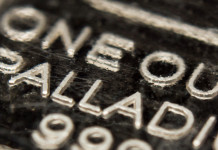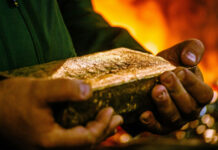
[miningmx.com] — BOOM? What boom? That’s the question one’s likely to ask about the commodities boom when looking at South Africa’s latest national accounts and balance of payments (BoP) statistics. Contrary to belief in some quarters, South Africa isn’t riding the wave of the commodities price boom.
While the world is supposed to be in the grips of a commodities super-cycle, South Africa is counting on financial services, manufacturing and construction to provide it with national income.
Where this is most obvious is in the breakdown of the supply-side of the gross domestic product (GDP) figures. The Reserve Bank’s latest Quarterly Bulletin says output in the mining sector contracted at a rate of 7.75% in the first quarter of 2007.
The Bulletin says this reflects lower production of platinum and diamond mining. Platinum mining output fell because of scheduled maintenance of a smelter at one of the mines in the first quarter. This was reinforced by industrial action at some of the platinum mines, and resulted in a decline of platinum exports. Real output of diamond mines declined, reflecting weaker demand during the period.
The picture on the balance of payments (BoP) is similarly dismal. Referring to the decline in overall export volumes in the first quarter, the Bulletin says mining and mineral exports in particular were negatively affected, as the South Africa mining industry faced various challenges in the opening months of 2007.
These included a loss of production due to maintenance of aluminium smelters and logistical problems related to the transportation of coal to South African harbours.
The reduction in mining export volumes was partly offset by an increase of about 2% in the rand prices of these goods as the dollar price of international commodities rebounded in the first quarter of 2007. In dollar terms, international commodity prices rose by 6.5% from the fourth quarter of 2006 to the first quarter of 2007.
The physical quantity of net gold exports sank by 9.5% in the first quarter of 2007. This decline in production was partly offset by a 4.5% increase in the average price of gold. The net result was that the value of net gold exports fell by 5.5% over the period.
Manufactured exports grow
Interestingly, the Bulletin says the setbacks in mining export volumes were partly offset by an increase in the volume of manufactured exports.
The Bulletin doesn’t mention this, but there has been a lot of focus lately on the need for South Africa to increase manufactured export volumes, as a way to reduce its external vulnerabilty.
It’s one of the points made by the Harvard Group of economists who are advising the South African government on economic policy. Though the Bulletin’s comment is encouraging, South Africa still has a long way to go in this regard.
The interesting point about the commodities boom and how it relates to South Africa is that, in the eyes of the world, the rand remains a commodities-based currency. Thus the rand benefits from increases in commodities prices. Gold mines might be mining less, but when the gold price rises, the rand still benefits.
As the figures above illustrated, this effect entirely reflects sentiment rather than the reality of South Africa’s BoP and GDP situation. But the positive effect on foreign investor sentiment arising from the commodities boom has had the benefit of preventing the rand from sharp depreciation.
The use of the word “benefit” in the previous sentence might come as a surprise to those who know I have argued before in favour of rand depreciation. However, I have to admit that, given what the petrol price has done to our wallets, a further whallop from a weak rand would have gone down like a lead balloon. The rand?s relative strength has insulated consumers from even steeper petrol price hikes and even worse interest rate increases.
However, the rand’s relative strength has had a spin-off on South Africa’s current account on the BoP. The current account remained surprisingly high in the first quarter of this year at about 7% of GDP. On an annualised basis, this translates into R131bn.
That means that if the situation in the first quarter persists for a year, R131bn is the amount of foreign capital the country has to attract to finance the shortfall on the current account.
The trouble with this high deficit and this relatively strong rand is that the situation might only be postponing pain until later – when foreign investor sentiment sours towards deficit countries.
A little more rand weakness now, a better export performance and a slowdown in the demand for imports would put the country on a safer footing. But, as I’ve said before, engineering “a little more” rand weakness is a tall order indeed.
Another question is – given that South Africa’s current-account deficit is sinking into the red to the tune of R131bn in the midst of a commodities price boom – how the BoP is going to fare when the boom fades? It’s not looking good now, but how will it look when the cycle turns?











